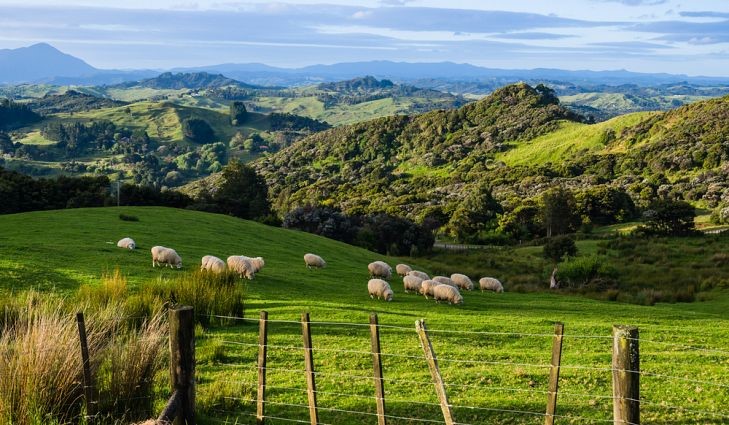New Zealand hill country sheep and beef livestock are producing about half the amount of nitrous oxide (N2O) per unit of nitrogen from urine or dung than previously thought.
Nitrous oxide is New Zealand’s second most important agricultural greenhouse gas, representing 22% of agricultural emissions, or 11% of total GHG emissions.
The new findings come from an AgResearch study commissioned by the Ministry for Primary Industries, which involved a meta-analysis of over 1,200 emission factors and data measured from 139 field experiments over the last decade. Emission factors represent the proportion of nitrogen that is released into the atmosphere from nitrogen sources such as urine, dung and fertiliser inputs.
Results from the meta-analysis showed that emission factors for sheep are about half that for beef livestock. It was also found that urine emission factors are higher for gentle slopes than for steeper slopes.
While the new emission factors for hill country farms does not mean dairy cattle, beef cattle, sheep and deer are emitting less N2O, it does provide a more accurate calculation of their emissions.
The new factors will be included in the Ministry for the Environment’s National Greenhouse Gas Inventory this year. The inventory is the official estimate of New Zealand’s human-induced greenhouse gas emissions and covers emissions under five sectors: energy; industrial processes and product use, agriculture, land use and land use change and forestry, and waste.
AgResearch scientist Tony van der Weerden said emissions from livestock excreta (dung and urine) deposited onto pasture are the single largest contributor to N2O emissions in New Zealand. In 2017, N2O emissions from animal excreta contributed the equivalent of 6.6 million tonnes of carbon dioxide within the agriculture sector, equivalent to 17% of agricultural emissions.
“The change for hill country farms is significant. For example, N2O emission factors from excreta deposited by sheep will be reduced by two-thirds while emission factors from beef cattle will be reduced by one-third. At a national level, the updated calculations result in a 4.4 % reduction in agricultural emissions and a 2.1 % decrease to New Zealand’s total reported emissions for 2017.
“The effect of slope on the urine emission factor is thought to be due to a combination of lower soil microbial activity and lower soil moisture contents on steeper slopes relative to low slopes. Under these conditions, smaller amounts of nitrous oxide are produced and released into the atmosphere.
“It is not yet fully understood why sheep have a lower urine emission factor compared to cattle. However, it is thought to be related to the lower volume of urine voided by sheep, which may lead to greater utilization of the excreted nitrogen by plants. However, this theory requires further investigation.”
The new emission factors were considered by an independent panel of agriculture emissions experts, who recommended they be applied to the 2020 national greenhouse gas inventory, which will report emissions from 1990 to 2018.
Manaaki Whenua Landcare Research was a partner in the research.
By industry, the emission reductions will be:
- Total sheep emissions (including methane and nitrous oxide emissions) reported for 2017 will be 10.6 % lower.
- Total beef cattle emissions (including methane and nitrous oxide emissions) reported for 2017 will be 5.0 % lower.
- Total dairy cattle emissions including methane and nitrous oxide emissions) reported for 2017 will be 1.4 % lower.
Source: AgResearch












